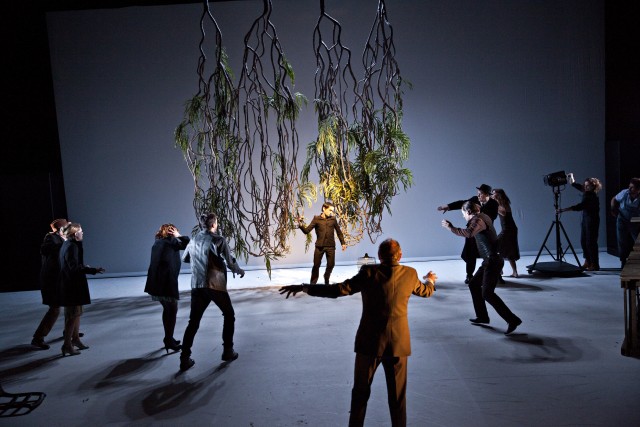This play has most definitely sparked the question of what is real and what is fiction. Even out of the context of the play reality is always something that is relative to the viewer. Everyone has their own interpretation of what they see this interpretation cultivates their own reality. This individualized reality explains why there is such a large variance in the comments made about the play. There are those who believe that the characters were never real and therefore the daughter and son never died, and there are those that believe everything that occurred on stage was real (at least in the sense of the play). It all depends on perception.
I personally believe that within the realm of the play, the characters that appeared on stage were real people. The events that transpired on the stage were real in the play. These characters were not simply fictional but real living people. This point can be made when the father talks to the director about the nature of his work, after the director claims the father is a madman. The father rebuts, stating that the director himself is the true madman, making the stories of fiction into reality when there are already real stories going on in reality that do not need to be dramatized. The father’s family, the characters, were symbolic of this. Their entire lives had turned out to be one giant tragic plot and in the end they wanted their story to be told, and an ending of their story to come.
These characters provide a dynamic view of reality. As I mentioned before there is no single reality, as every person has their own perception of it. Every single character has their own perception, they all provide a piece of the overall picture and interpreted different events in different ways. They all made the story a more realistic one, and was also a source of great confusion from many onlookers. Nevertheless all the pounding emotions led to the intrigue of the director and with each passing minute of the director he had become more and more enamored by the stunning story. As the family members were going on about their miserable and bleak lives, the director would make some remark such as “Brilliant” or “Perfect” indicating his isolation from the family’s tale, for he was just one of the audience right now, taking everything in and looking at what riches this play can bring him once performed on stage. Once the play comes to the close, the girl drowning and the boy shooting himself, the director’s mind is changed on the subject. He was no longer just the spectator, no longer just the listener, he was in the midst of the action. The horrible cruelties and drama that the family had was no longer “fiction” to him as he was in the presence of it.
The overall play was bleak and morbid and very much unlike other tragedies. Generally tragedies were produced and created to allow onlookers to feel a sense of relief that their own lives were not as damaged as the lives of the characters. However after this play I could not leave feeling any more thankful for my own life with the lack of as significant hardships, but leaving upset with the unfolding of all the events in such an unexpected and horrible climax.



 Carnegie Hall is known for its prestigious nature in the classical music and performance world. I’ve never actually been there before, but as a pianist, I know that it is a place where all musicians strive to be and play one day.
Carnegie Hall is known for its prestigious nature in the classical music and performance world. I’ve never actually been there before, but as a pianist, I know that it is a place where all musicians strive to be and play one day. Professor Drabik asked us if we hated her.
Professor Drabik asked us if we hated her.